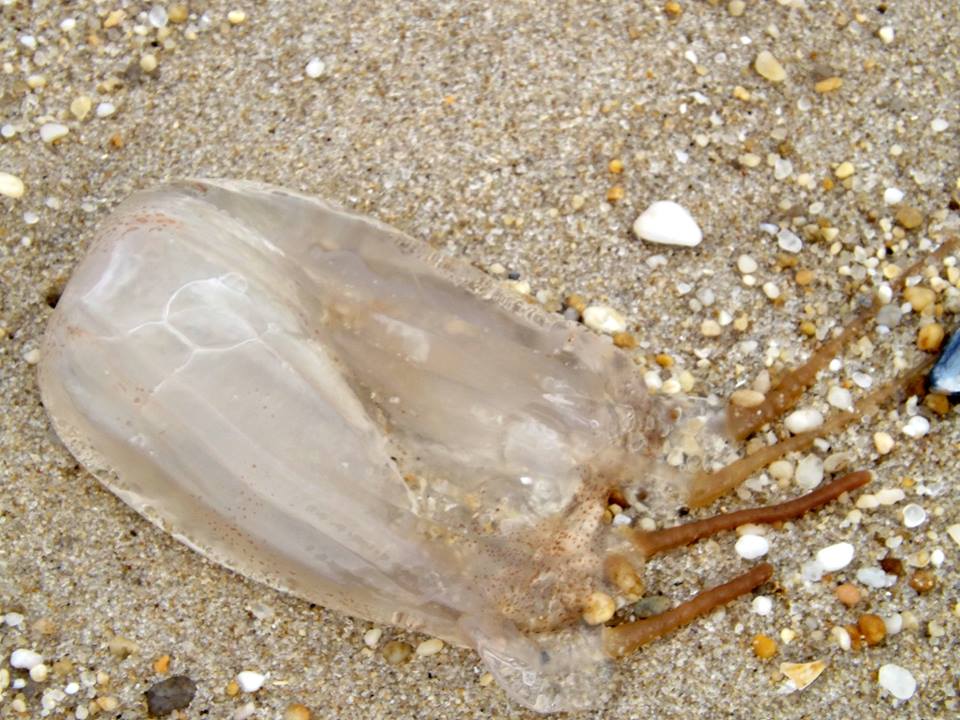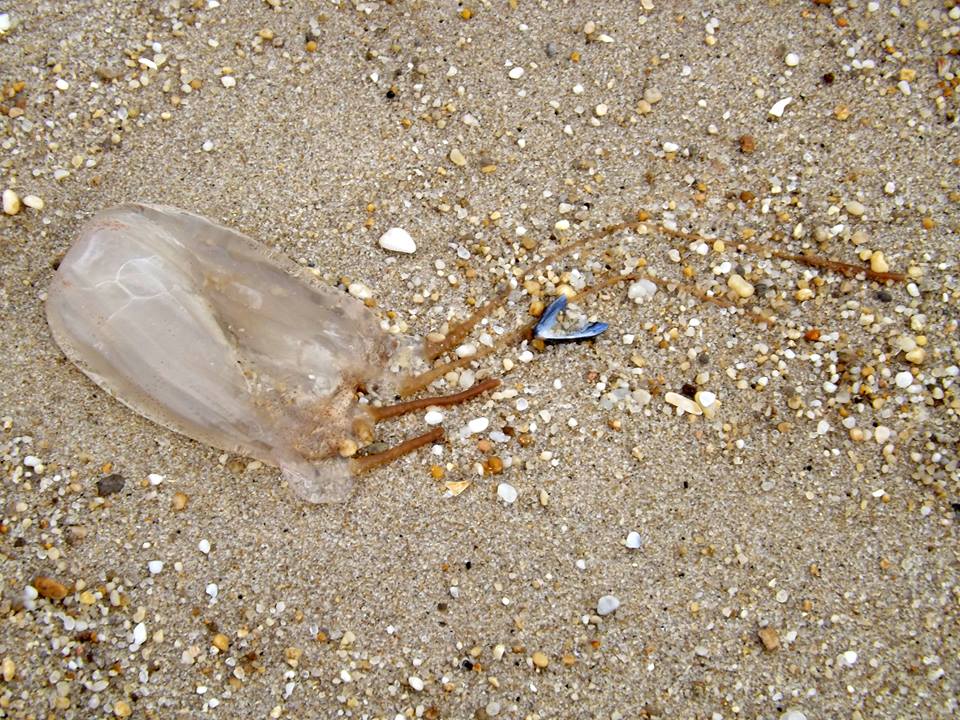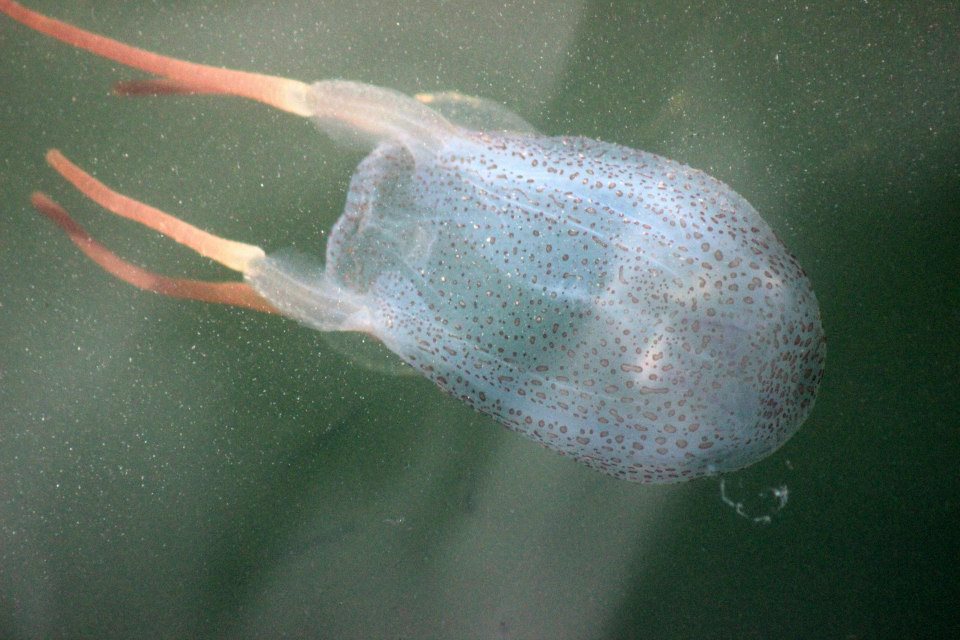
A box jellyfish found on the beach in Point Pleasant Beach, N.J., Nov. 2014 (Photo: Jerry Meaney/Barnegat Bay Island/Facebook)
Last month, Point Pleasant Beach resident Jerry Meaney snapped a photo and recorded a video of a rare, dangerous box jellyfish swimming in the Manasquan River near Gull Island. The find garnered the interest of jellyfish experts from the east coast to Hawaii, since sightings of such jellyfish are so rare at the Jersey Shore.
On Thursday, Meaney found another potential box jellyfish that washed up in the surf on the beach and immediately called Bud Gillan, a high school science teacher from Florida who is also a well-known jellyfish expert. The sighting last month had piqued Gillan’s interest, Meaney said, and his call Thursday led to big plans being made for the specimen found on the beach.
“He contacted Dr. Allen Collins with the Smithsonian,” Meaney said through his Facebook page, Barnegat Bay Island. “Dr Collins called me tonight and we are delivering it to Washington where they will dissect it and check the DNA.”
|
|

A box jellyfish found on the beach in Point Pleasant Beach, N.J., Nov. 2014 (Photo: Jerry Meaney/Barnegat Bay Island/Facebook)
Box jellyfish are mostly associated with tropical waters, though their range extends from the equator as far north as New England. Still, the sighting of a box jellyfish anywhere near land – much less on a local beach – is extremely rare to the point of being virtually unheard of.
Box jellyfish are most commonly found off the coast of Brazil.
Gillan posted on the Facebook page that an initial look at the jellyfish seems to indicate it is from the genus Tamoya, which is in the “dangerous, not deadly” category. Box jellyfish are generally considered highly venomous and pack a nasty sting which often lands bathers who come into contact with them in the hospital.
“We need more specimens to do the morphology and genetics,” said Gillan, who added that Meaney’s finds are “making jelly history.”
Locals should be on the lookout for box jellyfish in order to collect them for future specimens, though they should never be handled with one’s bare hands. Even in the case a dead jellyfish is found, the species retains its sting even after it is dead, according to the National Institutes of Health.













